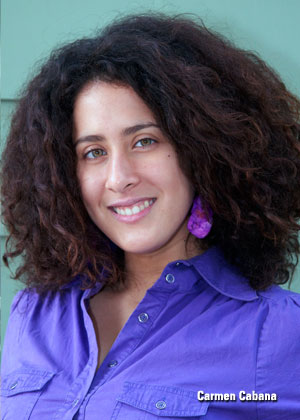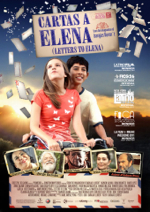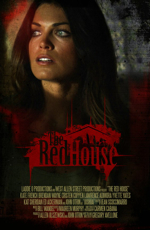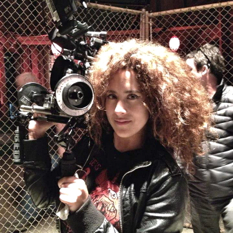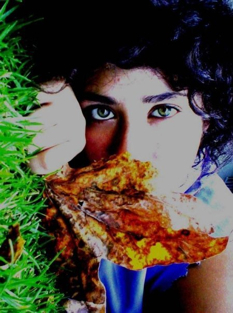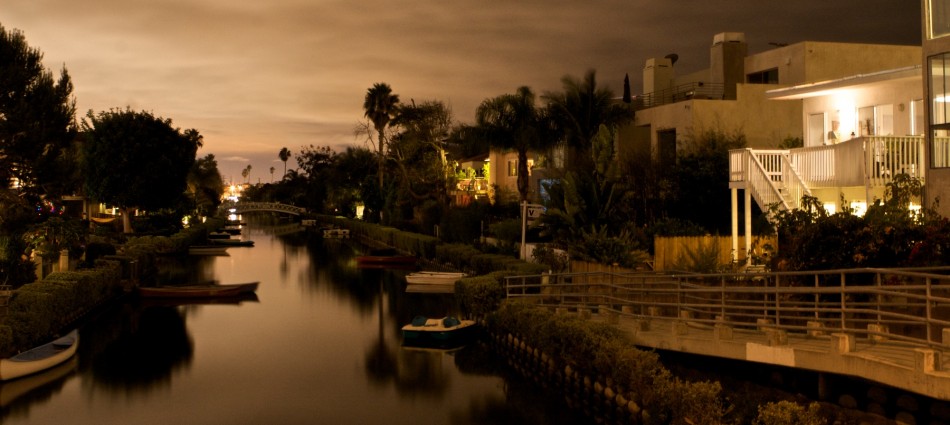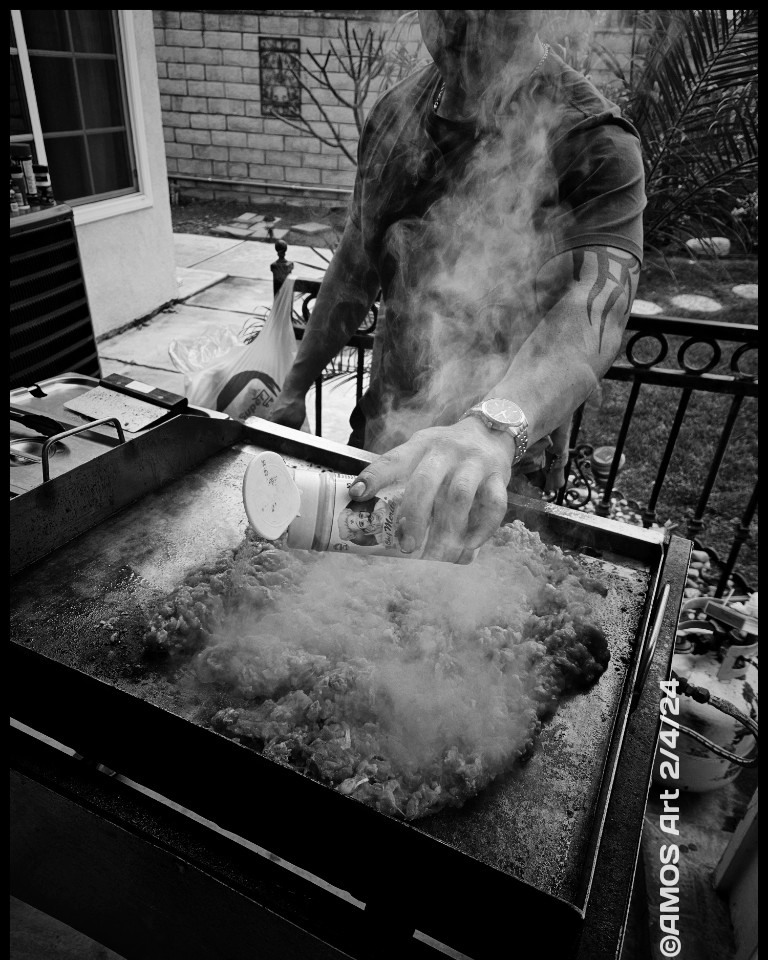Carmen Cabana doesn’t look like a cinematographer. She’s not male, she’s not middle-aged, she’s not wearing a Hawaiian shirt…and she’s Latina.
She’s also ridiculously talented for one so young, a dynamo of energy and dedication. A still photographer and painter in her native Colombia, she has been involved in cinematography and in the U.S. only for a few years, but her work displays a confidence and beauty well beyond her years (we have some examples below).
Her “big break”–as she calls it herself–was the lush Cartas a Elena (Letters to Elena), directed by Llorent Barajas. Shot in 2010 and released in 2011, this beautifully made romance won a Premio ACE Award for supporting actress Lorena Velazquez and is competing for the Ariel Awards 2013. The film earned Carmen a host of other projects, including The Boarder, a deeply affecting look at Reactive Attachment Disorder, The Shifting, an urban drama with a surprisingly spiritual twist, and ten more titles, latest one being Bullet an action packed film starring the legendary Danny Trejo. Combine that with a wide range of short subjects and at least 3 films in pre-production, and it’s clear: Carmen Cabana’s career is on a stunning upward trajectory.
We sat down with Carmen a while back and talked to her about her burgeoning career as a cinematographer–and as a Latina and a woman in a branch of the business that is traditionally none of the above.
How did it all begin? “Back home in Colombia,” she told us, “I had still photography and painting as my hobby. I’ve always been attracted to conveying emotions symbolically through images. Somehow, in Colombia, I thought I was going to be a fantastic writer, and it was only when I came to the U.S. in 2005 to pursue an official career in video production that I realized: “I suck as a writer.” She laughs about it now–a genuine, infectious laugh that’s central to her personality. “Life just takes you in different paths,” she says, shaking her impressive mass of curly hair.
“I kept getting called in to do cinematography…and among the things I love doing is getting into situations I shouldn’t be getting in. I had just bought my first video camera, because I thought documentaries would be a fantastic and spontaneous way to tell stories visually, so I got myself into a neighborhood packed with gangs and started following a boy, and it came out really good, it gave me my break…but it hasn’t been that long of a career. As a cinematographer, I started working in 2007. I was learning English in 2005.”
There is a very strong visual style to Carmen’s work–an understanding of the depth of dark and light, shadow as well as color. She does more than simply observe and record what’s in front of her: she enhances it. “That’s from my being a fan of Rembrandt,” she observes, and it’s true: like Rembrandt, her work is strikingly dark, but still filled with depth and detail. She also credits Italian cinematographer Vittorio Storaro (Apocalypse Now, Reds, Ladyhawke) as an inspiration, and the connections are obvious there as well: an almost painterly richness, even if the subject matter is unequivocally contemporary.
Sometimes it’s about enhancing the beauty in front of her. Other times, she admits, about making something from nothing. “Some of the films I have done,” Carmen says, “like The Red House, there was really nothing within the space at all that would make it scary. The location was rather cozy and lovely but the space had great potential. So sometimes my job is the opposite: not enhancing but creating from scratch that which is not there. We use plastics, graffiti; props and we decorated it. We had a beautiful garage with an old Cadillac in it that had to come out, so we could put in elements to make it look like a warehouse where someone was going to be tortured. That’s kind of fun, too.”
The spontaneous, the rough-and-tumble: that’s what Carmen loves. And she’s loved since her days as a photographer in Colombia. There are “a lot of crazy stories” she still can’t tell, she admits, but her time as a photographer and artist in the urban world certainly shaped her.
That same innovation and courage in the face of adversity is important in independent filmmaking as well. “When you’re doing low budget,” she says, “you just don’t have the resources you need most of the time, but you still have to make it work.” As just one example, she remembered a complicated shoot in Mexico that involved a lot of driving, but they had no budget for an expensive car rig…“but her local gaffer Antonio Chavez said, ‘Don’t worry, Carmencita. I’ll bring you some wood and planks, and I will build you a car rig.” And he did–in less than two hours. “I think that’s one of the things I admire from Mexico,” she told us during our talk. “The attitude was, regardless of the level of experience or resources, everyone was so committed to the movie. They would do whatever they had to do to get the shot.”
And that’s still the case with Carmen. “I was a real geek when I was in school,” she says–hard to believe when you look at the beautiful, confident young woman today. “But it’s in my nature: I always want to be the best at what I do. I didn’t plan to be a cinematographer, but once I realized that’s what I am, I do everything in my power to be the best at it.”
She finds her biggest motivation in the filmmakers she works with. “Making a movie is so hard. The shooting is the easiest part; it’s a lot of effort and tears and sweat and commitment. And you have to be passionate to sacrifice and put all you’ve got into it. So when I see filmmakers around me going through all this trouble to tell their stories, that’s the motivation for me to stand on my head to help them, to tell the story: working extra hours, or learning this or that or get creative. When I work with somebody—with a few exceptions–I want to be the best friend to of these filmmakers and producers.”
Not that she’s a soft touch on set. “Part of it is craft,” she explains, “but not all of it. A lot of it is people skills. And sometimes you have to be tough and demanding. I have fired many crew members in the past, who tell me something can’t be done and I know it can be and I have to say, ‘You’re out.’ Sometimes you have to be hard. You have to have strength or people will just step over you or get lazy. I have always thought that the film itself is the King and everyone should do what is best for the King.
Carmen acknowledges she’s a fairly rare bird–a Latino cinematographer, and a female cinematographer. As to why there are so few women in her line of work, “I really don’t understand why,” she says. “They say it’s a male-driven industry, but I haven’t experience that so far. When my Mom was pregnant with me, I looked like a male baby in the uterus but my penis fell off…I do feel that I have a lot of masculine energy and maybe because of that they don’t treat me like a woman.” She can only recall a single incident, when a male co-worker looked at the tool belt she always wears on set and said, “What do you carry in there, your make-up?” But that’s the only time. “And,” she said, shrugging. “there are assholes in every business. You just have to have a sense of humor and not take it too personally.”
I have also learned that in this industry you constantly have to prove yourself. People don’t believe you can do something unless you show them. In the action genre for instance: it’s an area in which I had a hard time breaking in. I lost so many opportunities because I didn’t have any action-related material to show in my reel. Therefore I got together with my partner Eric St John, who is a terrific actor and martial artist, and we choreographed, produced and shot two fight sequences for a an action film that we are pushing called Out for Blood. The clip became a YouTube sensation; in three weeks we had half a million hits and the numbers kept rising. Now we are over a million and the video has crossed seas and is now collecting hits in websites like youku.com (the Asian YouTube). Out for Blood opened the door for films like Lineage and Bullet.
Given her rapid advancement and passion for her work, you have to wonder what Carmen’s future plan might be. Even if she thinks she ‘sucks’ as a writer…what about directing one day? “I’ve been asked this question before,” she says, “but personally, I have no dream of being a director. My brain is technical, but when it comes to actors, it’s not about technical things. I can make lights and cameras do whatever I want, but you can’t always make an actor do whatever you want. I’ve watched directors; it’s the art of pulling the best out of an actor, helping them get to those characters, and that’s a section of the art I have no knowledge, no skill. Maybe someday I’ll get it, but right now it is not in my goals…though if I did do it someday, it would be a horror movie. That’s my favorite genre. I’m a masochistic person, and I love being scared.”
But if being a director isn’t part of the plan…what about being a producer? That, she says, may happen someday. She does have a dream of starting a company that can produce “high-quality stories, amazing-looking movies, a company where we can open doors for people who are new in the business and has an amazing script. I want to support new filmmakers. As long as I see a good story, talent and commitment, I want to be part of it.”
Meanwhile, Carmen Cabana keeps working. She has a dozen projects recently completed and not yet released or in post- or pre-production. And there are a dozen other projects just over the horizon. “I just want to go wherever a good story takes me,” she says. “If it’s in China or in Saudi Arabia or in Africa with some alligators biting on my butt, I want to go there. So long as there’s a good story, I’ll be there.”
You can see some samples of Carmen’s work at these links, here and here.
Photos: Courtesy of Carmen Cabana

